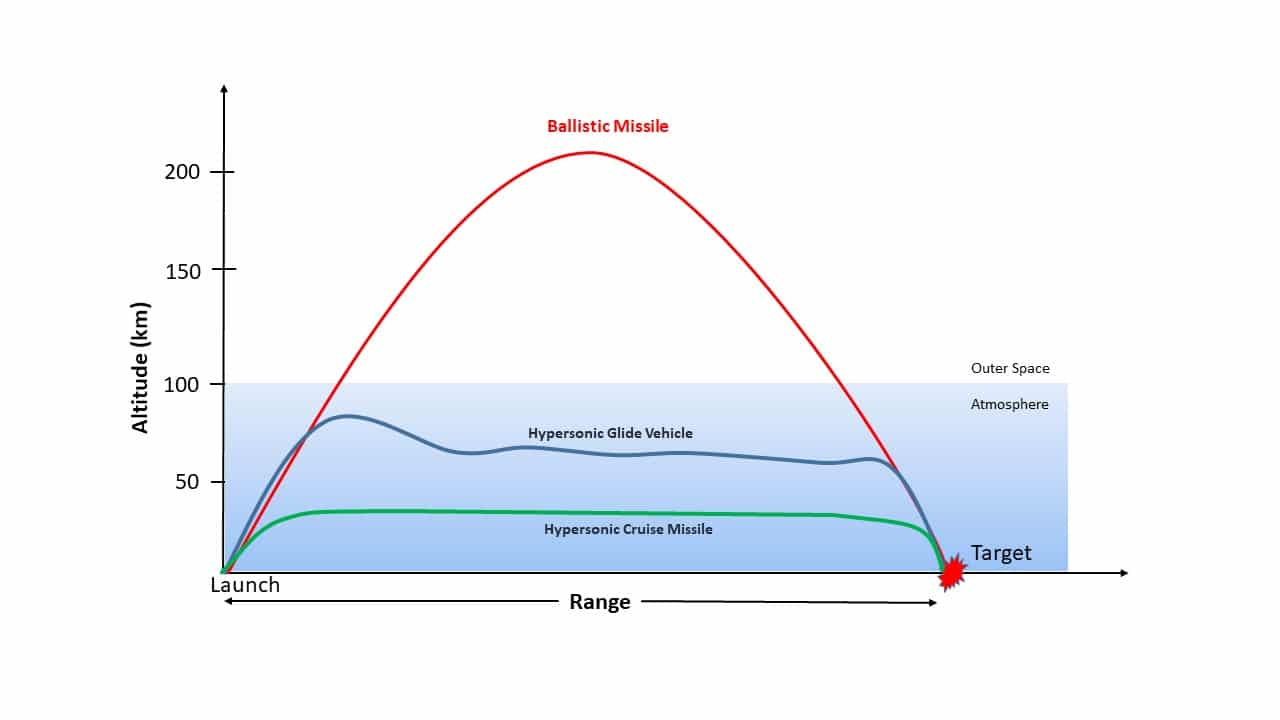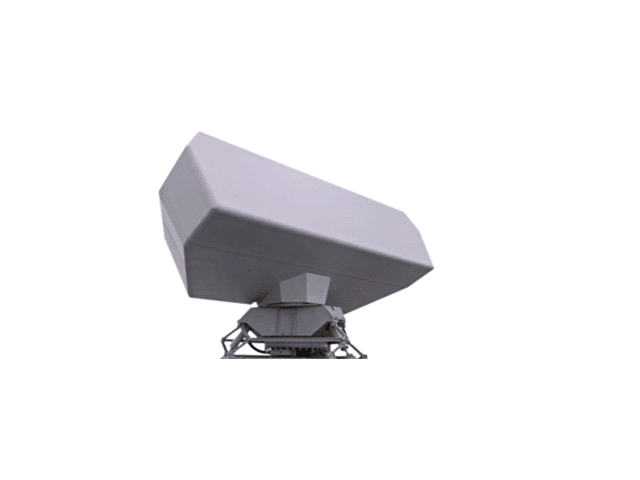Hypersonic missiles and glide projectiles are those which travel at least Mach 5, or five times faster than the speed of sound. In round numbers, this equates to a speed of about a mile a second. For comparison, even the quickest modern fighters generally top out around Mach 2, with only specialized aircraft capable of reaching Mach 3. Once an airframe reaches Mach 4, 5, and beyond, specialized technologies like supersonic combustion ramjets, or SCRAMJETs, must be used to carve through the air. Unlike traditional jet engines, SCRAMJETs use no moving parts or machinery to direct and combust air, thereby making them incredibly efficient at plowing an airframe through the sky at incredibly high speeds.

Simple RAMJET operation 
Diagram of principle of operation of a SCRAMJET engine.
There are two primary categories of hypersonic weapons:
- Hypersonic Glide Vehicle (HGV)
The Hypersonic glide vehicles (HGVs), are typically launched by rockets into the upper atmosphere. They are released at altitudes that can vary from around 50 km to higher than 100 km and glide to their targets by skipping along the upper atmosphere.

- Hypersonic cruise missiles (HCM)
Hypersonic cruise missiles (HCMs), which are powered all the way to their targets by rockets or advanced jet engines, such as scramjets (supersonic combustion ramjets). Actually they are faster versions of existing cruise missiles. In order to achieve appropriate pressures for combustion in the scramjet engine, an HCM will likely cruise at an altitude of 20 to 30 km.

Hypersonic weapons can deliver nuclear or conventional warheads. However, another attribute common to both HCMs and HGVs is the potential to use solely kinetic energy to destroy or damage an unhardened target. The hypersonic weapons’ high kinetic energy affords significant destructive power, even without, or in addition to, the destructive power of an explosive warhead. Their high impact speed can also be leveraged to help defeat underground facilities. A hypersonic missile with speed of Mach 8 and mass of 500 kg is provides the similar effect of 3 metric tons of TNT.
What makes these missiles nightmare?
They are maneuverable, fast and hard to detect. It is the combination of the characteristics that makes these systems challenging to defend against. The subsonic cruise missiles offer good maneuverability but relatively low speeds, and ballistic missiles offer hypersonic speed but little or no maneuverability. Both hypersonic weapon types are far more difficult to defend against than legacy ballistic missiles. Moreover, their flight altitude and maneuverability result in less warning as compared with higher-flying ballistic missiles.
A hypersonic attack could occur with very little warning time; this factor and the unpredictability of the targets of a hypersonic attack compress the timeline for response by the party being attacked. These threats encourage the threatened nations to take such actions as devolution of command and control of strategic forces, wider dispersion of such forces, a launch-on-warning posture, or a policy of preemption during a crisis.
Why it is hard to detect the Hypersonic Weapons?
- Flight Altitude
Nations that do not possess (or have access to) space-based sensor systems to detect ballistic missile launches and that rely on ground-based sensors, such as radars, to detect incoming mid- to long-range ballistic missiles, could experience a further compression of their decision/ response timelines. The reasoning is that typical ballistic missiles tend to fly at higher altitudes than hypersonic missiles and should therefore be detectable earlier.
Due to the Earth’s curvature and the HGVs’ low-gliding altitude as compared with that of a similar range ballistic missile, radar or other line-of-site sensors will likely not detect an HGV as early as they would a ballistic missile. For example, a radar operating from the surface of a smooth Earth would detect a 3,000-km-range RV about 12 minutes before impact, but would not detect an HGV until about six minutes before impact.
Compounding the defensive challenges even further, even HCMs would fly at altitudes higher than most current surface-to-air missile systems are capable of reaching.

- Plasma Stealth
Plasma stealth is a proposed process to use ionized gas (plasma) to reduce the radar cross-section (RCS) of an aircraft. Interactions between electromagnetic radiation and ionized gas have been extensively studied for many purposes, including concealing aircraft from radar as stealth technology. Various methods might plausibly be able to form a layer or cloud of plasma around a vehicle to deflect or absorb radar, from simpler electrostatic or radio frequency discharges to more complex laser discharges. It is theoretically possible to reduce RCS in this way, but it may be very difficult to do so in practice. Some Russian systems e.g. the 3M22 Zircon (SS-N-33) missile have been reported to make use of plasma stealth.

- Invisibility
U.S. defense officials have stated that both terrestrial- and current space-based sensor architectures are insufficient to detect and track hypersonic weapons. Hypersonic targets are 10 to 20 times dimmer than what the U.S. normally tracks by satellites in geostationary orbit.
- Current Radar Algorithms
Most of the current radars are optimized for conventional threats, such as fighters, subsonic/supersonic missiles. These radars evaluate the radar plots and determine if these plots are meet the target criteria. With its high speed and flight pattern the hypersonic missiles probably will not meet the track initiation criteria current radars.

- Data Links and Command Control Architecture
Some analysts have argued that the current command and control architecture of the countries would be incapable of “processing data quickly enough to respond an incoming hypersonic threat.

End of the Part-1
Next:





